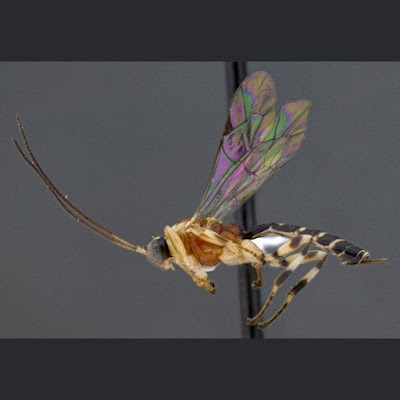|
|
| Пишет Species New to Science ( @ 2019-05-22 04:03:00 |
|
|
|
|
|
|
|
|
|
|
|
|
|
|
[Entomology • 2019] Zatypota baezae & Z. mulunguensis • Two New Species of Zatypota (Hymenoptera: Ichneumonidae, Pimplinae) Sharing the Same Host Spider in Northeast Brazil
 |
| Zatypota mulunguensis Sobczak, Pádua, Villanueva-Bonilla, Nóbrega & Messas, 2019 |
Abstract
Some polysphinctine wasps of the genus Zatypota complete their life cycles upon theridiid host spiders. The host range of these wasps is usually species-specific, although in some less common associations more than one wasp species interacts with the same host spider. Here we describe and illustrate the polysphinctine wasps Zatypota baezae sp. n. and Zatypota mulunguensis sp. n. (Hymenoptera: Ichneumonidae), both koinobiont ectoparasitoids of the spider Anelosimus baeza (Theridiidae). The two parasitoid wasps show the same development time (12 days) which was longer when compared with other parasitoid wasps Z. anomala Holmgren and Z. riverai Gauld (nine days). As described for other species of Zatypota and Hymenoepimecis, the second larval instar remains attached to the spider by the remains of the chorion and also by a rigid brownish-semitransparent membrane called a saddle.
Keywords: Hymenoptera, Anelosimus, koinobiont ectoparasitoid, Neotropical, polysphinctine wasps, taxonomy
Jober Fernando Sobczak, Diego Galvão de Pádua, German Antonio Villanueva-Bonilla, Francisco Ageu de Sousa Nóbrega and Yuri Fanchini Messas. 2019. Two New Species of Zatypota (Hymenoptera: Ichneumonidae, Pimplinae) Sharing the Same Host Spider in Northeast Brazil. Zootaxa. 4609(1); 169–177. DOI: 10.11646/zootaxa.4609.1.9
